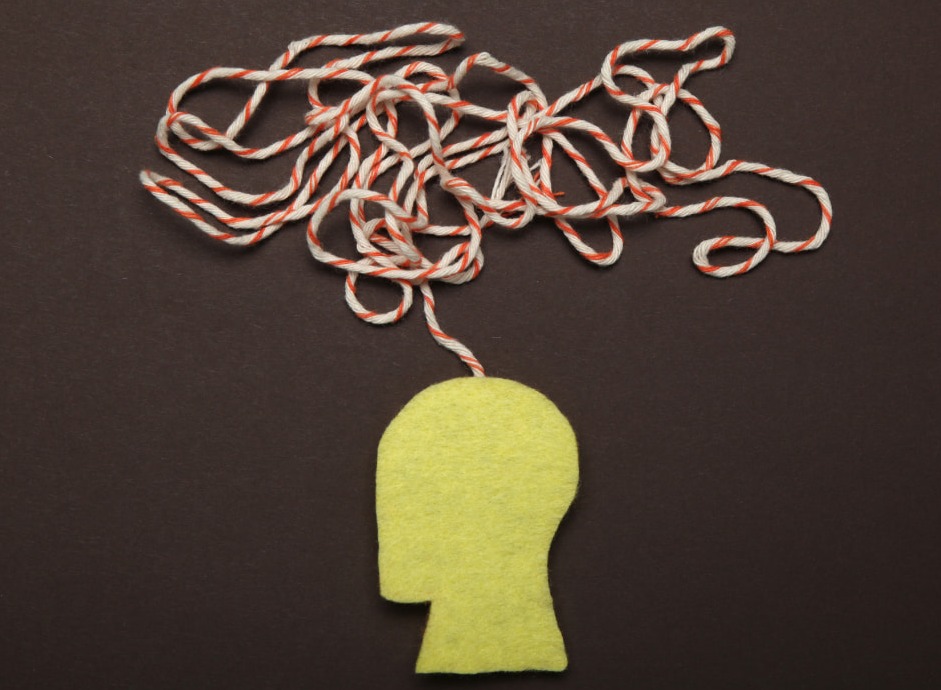ADHD: What are its symptoms and causes and how is it treated?
Published 13 Jan 2022 • By Claudia Lima
Attention Deficit Disorder with or without hyperactivity component, or ADHD, is a neurodevelopmental disorder which causes symptoms that, if left untreated, can have serious consequences.
What are the symptoms and causes of this syndrome? How can it be treated?
To find out all about it, read our article!

Attention Deficit Disorder with or without hyperactivity component appears in childhood and often persists into adulthood. It affects between 2 and 5% of children and 3-4% of adults, the majority of which are undiagnosed.
What are the symptoms of ADHD? How is it diagnosed?
ADHD is characterized by a set of 3 main symptoms which are
- Inattention, difficulty maintaining the same level of attention for a long time, and not being distracted by external stimuli,
- Motor hyperactivity, a need to move constantly, to talk a lot and to make noise, difficulties completing tasks,
- Impulsiveness, inability to wait before speaking or to delay action, difficulty managing emotions and keeping calm.
Although these types of behavior can be found in many people, they are unusually more pronounced in those with the disorder.
In some people, ADHD can also lead to difficulty managing emotions, which is called emotional hyper-reactivity.
The signs of ADHD are mostly observed in children of around 10-12 years old but can occur as early as at the age of 2. The disorder persists into adulthood in 55% of cases. It is also possible to be screened for it in adulthood.
ADHD is hard to identify, as health professionals are not well trained in this particular disorder. Moreover, signs may vary in children and teenagers, and the disorder can sometimes be silent at a younger age, only to reveal itself in adulthood.
In order for ADHD to be diagnosed in children, their difficulties, the first alarming signs, must be noticed by family and friends or by school staff (for school children and teenagers). ADHD has a significant impact on the child’s learning capacities: the child is excessively dreamy, lacks concentration, is agitated, unorganized, does not know how to be independent, has irregular school results, etc. The family doctor has a key role to play in the diagnosis of the disorder, because he or she knows the child well. The doctor can suspect ADHD on the basis of the 3 main symptoms, but also in the case of associated impairments such as sleeping disorders, learning difficulties, or relationship difficulties.
In adults, the additional signs are internal tension, anxiety, sensation-seeking, mood swings, anger and impulsiveness, low self-esteem, difficulty coping with stress and frustration, and lack of stability in personal relationships and at work.
Clinical examination will enable the child or adult concerned to be referred to a doctor specialising in the diagnosis and treatment of ADHD. The diagnostic criteria for ADHD are grouped in the DSM-5, a classification system for mental disorders (Diagnostic and Statistical Manual of Mental Disorders).
What are the causes of ADHD?
ADHD is a neurological disorder, linked to abnormalities in brain development and function that result in lack of inhibition and stimulation of the brain.
Researchers have observed that in affected individuals (both children and adults), the brain areas responsible for attention, organization and movement control become abnormally activated and that there is an imbalance in the levels of dopamine and norepinephrine.
It is not caused by unmet emotional needs or psychosocial problems. Certain factors can increase the risk of developing ADHD: exposure of the fetus to certain toxic substances (alcohol, tobacco, drugs), bacterial meningitis, head trauma or premature birth, among others.
In the long term, there is a risk of serious consequences that ADHD can have on the person’s life, such as difficulties finding a job, risk of social disintegration and addictive behavior. ADHD should be treated when its symptoms significantly and persistently impair academic, occupational or social functioning and quality of life of the person with this disorder.
How can ADHD be treated?
There is no cure for ADHD, so the aim of the treatment is to reduce the intensity of the symptoms.
Once the person is diagnosed, treatment is tailored to particular symptoms and their severity. The earlier the treatment is started, the more effective it will be in preventing the development of associated disorders.
The first approach is non-pharmacological and includes educational, social and psychological measures such as individual therapy or behavioral and cognitive therapy (CBT). In the case of younger children, their parents are offered assistance, so that they could better manage their child's behavior: rehabilitation programmes in the field of speech therapy, psychomotor therapy and occupational therapy.
When non-pharmacological measures are insufficient, medication can be prescribed, but only for the most severe cases and for patients aged 6 and more:
- Methylphenidate, a widely used psychostimulant such as Ritalin®, Concerta® or Equasym®,
- Amphetamine derivatives such as Adderall®, Dexamfetamin sulfate® and Vyvanse®,
- Atomoxetine, an anxiolytic such as Strattera® .
These drugs have many side effects such as insomnia, heart palpitations, headaches, abdominal pain, etc. However, with these treatments, the majority of people with ADHD experience symptom relief.
Untreated ADHD increases the risk of developing or complicating several other disorders and conditions, such as behavioral disorders or mental illnesses (anxiety, depression, bipolar disorder, oppositional disorder, relationship problems, sleep disorders, eating disorders), addictions (to tobacco, alcohol, drugs, screens), dropping out of school, frequent change of jobs or loss of employment.
Are there other ways to treat ADHD?
There are many complementary approaches to the treatment of ADHD, but there is no scientific evidence for their effectiveness. Research will eventually determine the place of these approaches among the existing therapeutic strategies.
Here are some of the complementary approaches:
- Neurofeedback training, a technique through which a person can learn to control the electrical activity of their brain,
- Homeopathy,
- Massage therapy,
- The Tomatis method: a form of sound therapy to improve listening skills,
- Nutritional approach with extra vitamins and minerals, but also dietary restrictions.
ADHD is more and more seen in adults; until now it did not really exist, but requests for diagnosis are more and more frequent. As the disorder is still hard to identify, patients often suffer from misdiagnosis.
Was this article helpful to you?
Give it a like and share your thoughts and questions with the community in the comments below!
Take care!
Sources:
Un consensus international pour une meilleure reconnaissance des troubles de l'attention, lemonde.fr
Trouble Déficit de l'Attention/Hyperactivité, passeportsante.net
Trouble Déficit de l'Attention avec ou sans Hyperactivité (TDAH), has-sante.fr
Les traitements du TDAH, vidal.fr
Associations Hypers Supers TDAH, tdah-france.fr
1 comment
You will also like

Attention deficit hyperactivity disorder (ADHD) in adults: how can it be recognised and treated?
22 May 2025

ADHD: "I couldn't sleep at one point because my head was so full of thoughts."
11 Jan 2023 • 1 comment

 Facebook
Facebook Twitter
Twitter

